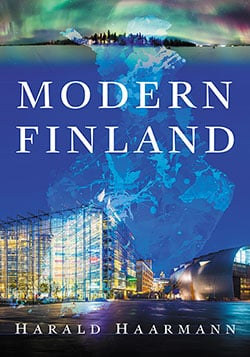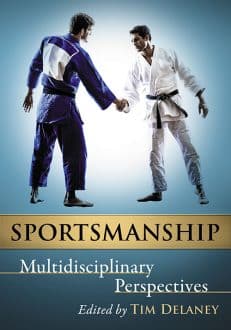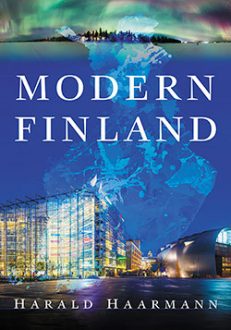Modern Finland
$39.95
In stock
About the Book
Providing a multifaceted view of modern Finland, this book describes its history, culture, language, geography, natural history and the mythology of early peoples. Topics include Fenno-Scandia inhabitants and their environment, traditional naturalism and modern environmentalism, and the salient features of “Finnishness,” including an analysis of the Finnish educational system and gender equality. Finland’s art, architecture and music are highlighted, along with its peace-keeping missions worldwide. The country’s several ethnic groups and their languages are discussed—the Saami, Finns, Finland-Swedes, Russian-speaking peoples, Jews and Gypsies. The author examines Finland’s late but rapid development in commerce and industry, with a focus on the history of Nokia Corporation, which grew from a 19th-century manufacturer of pulpwood and rubber boots to a 21st-century international digital communications company.
About the Author(s)
Bibliographic Details
Harald Haarmann
Format: softcover (7 x 10)
Pages: 256
Bibliographic Info: appendices, bibliography, index
Copyright Date: 2016
pISBN: 978-1-4766-6202-2
eISBN: 978-1-4766-2565-2
Imprint: McFarland
Table of Contents
Acknowledgments vi
Introduction: What Makes a Small Country Like Finland Exceptional? 1
1. How Do People Interact with Nature in Finland? The Natural Environment Vis-à-Vis Human Cultural Space 5
The Power of Nature—How the Environment Formed After the Last Ice Age 7
How Many Lakes Are There in Finland? 9
Finland and Wildlife: Where Are the Polar Bears? 10
The Bear and Its Role in Northern People’s Cultural Memory 13
How Did the Early Inhabitants of Fenno-Scandia Experience Their Environment? 17
• A Prehistoric Chronicle: Rock Art by the Lakeside 18
• The Solar Disk Symbolizing the Giver of Life 21
• Water Birds as Messengers Between the Worlds 24
Mythical Realms: Nature and Female Guardian-Spirits of Living Things 24
• Mother Nature: A Central Mythological Concept 25
• Ancient Ties to Living Nature: The Shamanistic Tradition 26
Traditional Respect for Nature Meets Modern Environmentalism 27
• Human Interests and the Scope of Nature 29
• The Control of Nature as an Historical Drive in Western Europe 30
• Respect for Nature in the Northern Region: A Traditional Notion Embraced by Modern Science 31
• Buildings and the Space Between Them: Modern Finnish Architecture in Contact with Nature 35
• Breaking the Rules: Talvivaara—The Black Sheep of Environmentalism 37
The Mystery of the Northern Lights 38
The Gold of Lapland 40
2. Where Do People Live and What Languages Do They Speak? Natives, Newcomers and Social Networking in a Multicultural Society 42
The Saami—Masters of the Arctic Region 44
• Saami Terms for Snow 45
• The Saami Have Many Words for “Reindeer” 48
• Modernization in the Arctic Region: Mass Tourism and Santa Claus 50
• Cultural Heritage in a Box: The Treasure of the Skolt Saami 53
• On the Ways Saami Speak Finnish 53
Finns: Modern Europeans with an Exotic Language 54
• The Coming of Finnic Tribes 56
• Finnish Communities in Fenno-Scandia 57
• Who Is Finnish and Who Is Karelian? 58
• Finnish: Some Specifics 59
• Finnish Americans and American Finnish (Finglish) 63
Finland-Swedes: The Nordic Input in Finland and Its History 65
• The Coming of Christianity 66
• Swedish Social Institutions in Finland 67
• The Impact of Swedish on Finnish 69
Russian-Speaking People: One Language—Two Ethnic Groups 70
• Russian-Speaking Immigrants 71
• Russian-Speaking Ingrians 72
• Russian Loanwords in Finnish 72
• Russian in Finnish Media 73
Jews in Finland: Merging with the Majority 73
Romani–Finland’s Gypsies: Between Ethnic Boundary-Marking and Social Integration 75
Refugees from Outside Europe: Resettling and Constructing Identity in the New Homeland 77
Language Choices in a Multilingual Society: Communicative Networks and How They Function in Finland 79
• Regulations of Finnish-Swedish Bilingualism 80
• Regulations of Finnish-Saami Bilingualism 83
3. What Makes a Finn and What Makes Finnish Society? Defining Finnishness 84
What’s in a Name? How Finns Call Themselves and How Others Call the Finns 86
Salient Features of Finnishness 87
• The Environmental Mindset 90
• Sisu: The Secret of Finnish Determination and Resilience 91
• Social Cohesion at Work: Trust and Reliability 93
The Finnish Sense for Pragmatism 94
Cultural Stereotypes in Light of Finnish Realities 96
• Finnish Sauna: Myth and Reality 96
• Tango—Finnish Style 98
The Lure of Snow and Ice: Finns and Some of Their Pastime Activities 99
• Skiing 101
• Ice Hockey 102
• Skating 103
Some Unusual Competitions 104
• Wife-Carrying (or Woman-Carrying) 104
• Mud Soccer (Football) 105
• Mobile Phone Throwing 106
What Holds Finnish Society Together? The Secrets of the Finnish Communitarian Spirit 106
• The Long Trail of Women’s Participation in Communitarian Decision-Making 108
• Female Shamans, Healers and the Christian Witch-Hunt 109
• Farm Households and Self-Confident Farm Mistresses 111
• Women’s Rights to Vote in Local and National Elections 112
• Women’s Equality in the Welfare State 114
• Giving Profile to the Scandinavian Model of a Welfare State 115
4. What Do Carl Gustaf Mannerheim and George Washington Have in Common? Impressions from the Drive for Independence 120
A Glimpse at Family History 121
The Guidance of Providence 122
Setting the Stage for Finnish-Russian Confrontation 123
Mannerheim as Leader of the White Finns in the Civil War 127
A Secret Diplomatic Mission and Early International Recognition of Finland’s Independence 128
Mannerheim as an Integrative National Figure at a Time of Crisis 129
Mannerheim and Washington: The Profile of Humble Public Servants 132
5. How Did Finland Modernize? The Secrets of Finnish Entrepreneurship, Know-How and Inventiveness 134
Maxims of Entrepreneurship and Finnish Work Ethics 135
Industrializing Finland: A Latecomer but a Fast Developer 137
The Finland-Swedish Impact on Industry and Commerce 140
Finland’s Economic Miracle: Standards of Technological Modernization 141
The Nokia Story: From Pulpwood and Rubber Boots to Communication Systems 143
• Modest Beginnings in the 1860s 144
• Engaging in the Production of Electrical Equipment Since the Early 20th Century 145
• Digitalization and the Great Endeavor of the Mobile Phone Business 146
• Selling a New Image of Global Telecommunication: Mobile Phones for Everybody 147
• Nokia’s Decline and Fall and Rise to New Heights 149
• Nokia’s Communicative Strategy for International Marketing 149
Managing Network Society: A Small Country Mobilizing Know-How and Capacities 150
6. What Makes Finland’s School Education So Efficient and How Important Are the Language Choices for Knowledge-Construction? 152
The Art of Learning Fast: Finnish Education and the Test of Time 152
Finnish as a Written Language: From Religious Books to Cybercommunication 160
Which Are the Media of Finnish Know-How? Foreign Languages as Mental Capital 164
• Latin and French 165
• Latin and German 165
• Latin and Swedish 166
• Finnish and German 166
• Finnish and English 167
English as the Icon of Modernity and of Intercommunication 168
• Domains of a Practical Use of English in Finland 168
• English as a Vehicle of Symbolic Internationalization 171
The Role of English for Higher Education and Professional Specialization 171
• The Passive Consumption of Academic Texts in English by Students 171
• The Passive Consumption of Academic Texts in English by Scientists 173
• The Production of Oral English Texts for Teaching and Training at the University Level 173
• The Production of Written Scientific Texts (i.e., Non-Literary Prose) in English 173
7. What Is Known in the World About Finnish Culture? Global Manifestations of the Finnish Creative Mind 177
Architecture 178
Art: Finnish Painting 182
Finnish Design and Fashion 183
• Finnish Glassware 184
• Finnish Furniture 184
• Finnish Homeware and Ceramics 184
• Finnish Textiles and Fashion 184
Literature 185
• The National Epic Kalevala and Its Legacy 186
• Sofi Oksanen’s Purge: An Unconventional Success Story 188
Finnish Filmmakers and Movie Stars Abroad 188
What Makes Finnish Music Attractive for the World? Composers, Conductors, Opera and Jazz 190
• Traditional Finnish and Saami Music 190
• Jean Sibelius and the Finlandia 191
• Finnish Composers Beyond Sibelius 193
• The World of Opera and the Savonlinna Opera Festival 193
• Finnish Creative Leadership in the Orchestra World 196
• Finnish Singers with an International Career 199
• The Pori Jazz Festival 201
The Moomins and Their Valley 201
Angry Birds and Other Computer Games 203
8. Do the Finns Have a Recipe for World Peace? Minding One’s Own Business and That of Others in a Cooperative Fashion 205
Prelude: Finland’s Contribution to Securing Bulgaria’s Independence 206
Finnish Peacekeeping Missions in the World Since the 1950s 206
Getting Along with World Powers 209
• Finland’s Flexibility to Cope with Foreign Rule: Per Brahe and Alexander II in Focus 209
• Per Brahe 210
• Alexander II 210
• The Odds of “Finlandization” 211
• The Conference on Security and Cooperation in Europe (1975) 212
The Art of Negotiating: Martti Ahtisaari and His Imprints on World Peace 213
• Achieving Independence for Namibia 214
• Negotiating Peace for Kosovo 215
• Negotiating Autonomy for the Aceh Region in Indonesia 217
Epilogue: How to Cope with Accelerating Globalization 219
Appendix I: Finland in Figures 223
Appendix II: Administrative Regions of Finland 225
Bibliography 227
Index 241
Book Reviews & Awards
- “Exceptionally well written, organized and presented…very highly recommended”—Midwest Book Review





